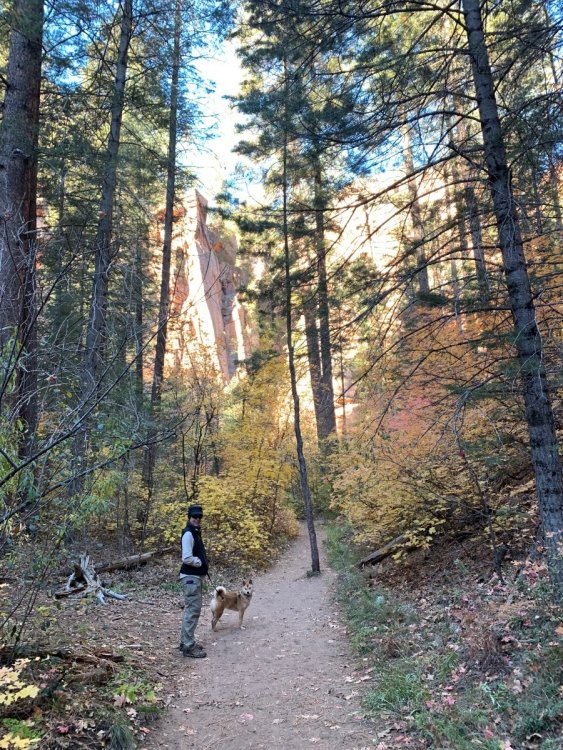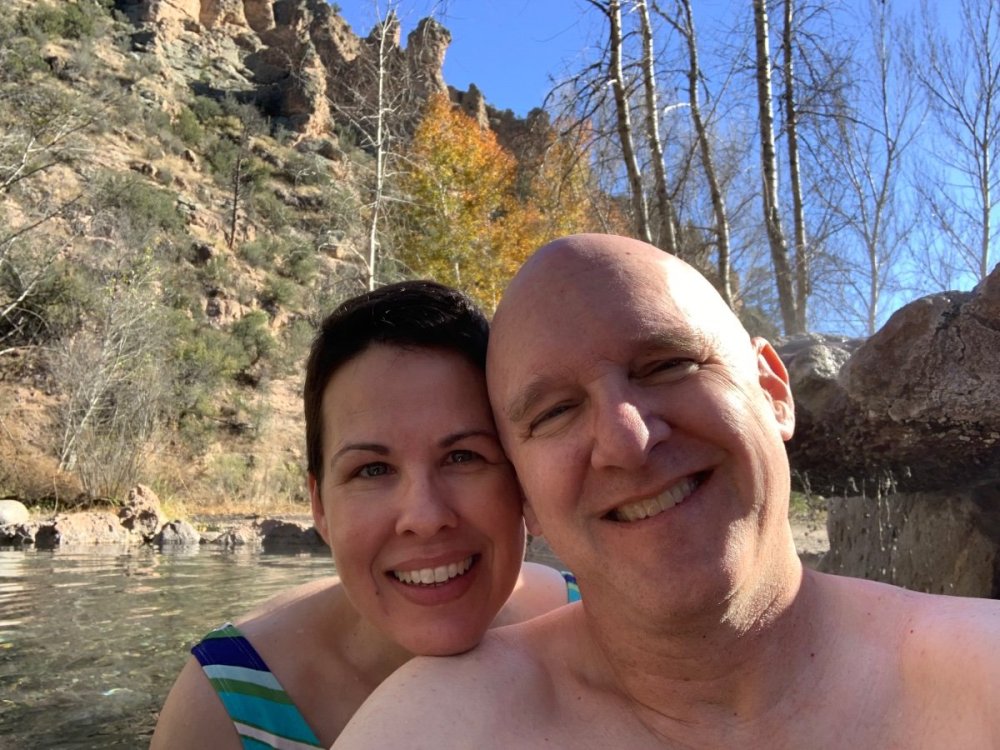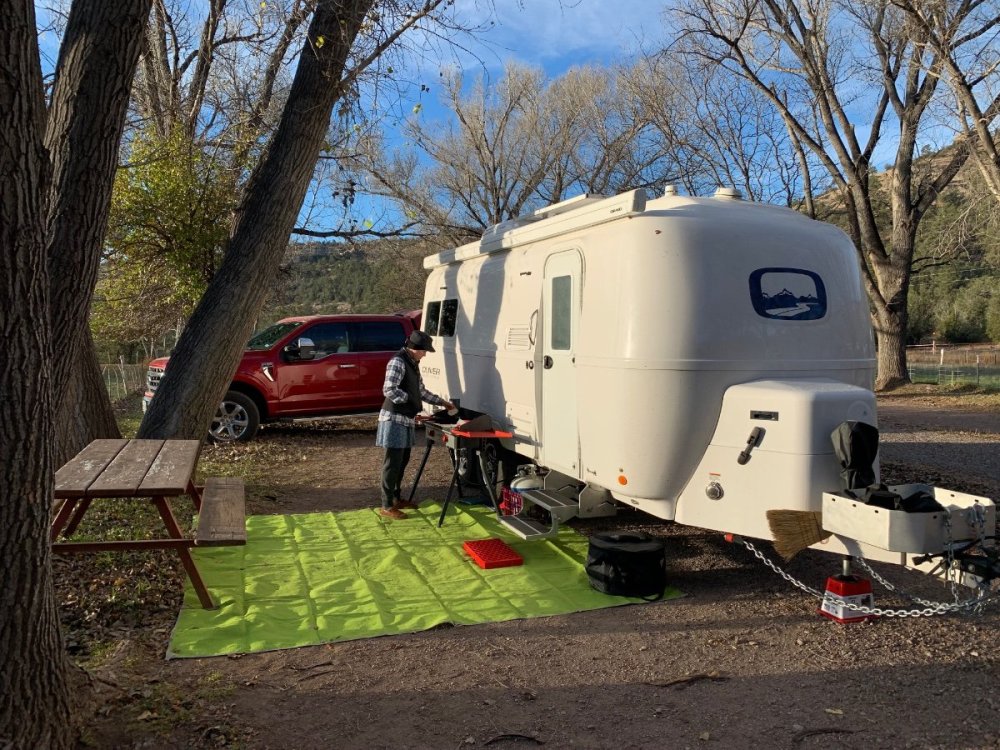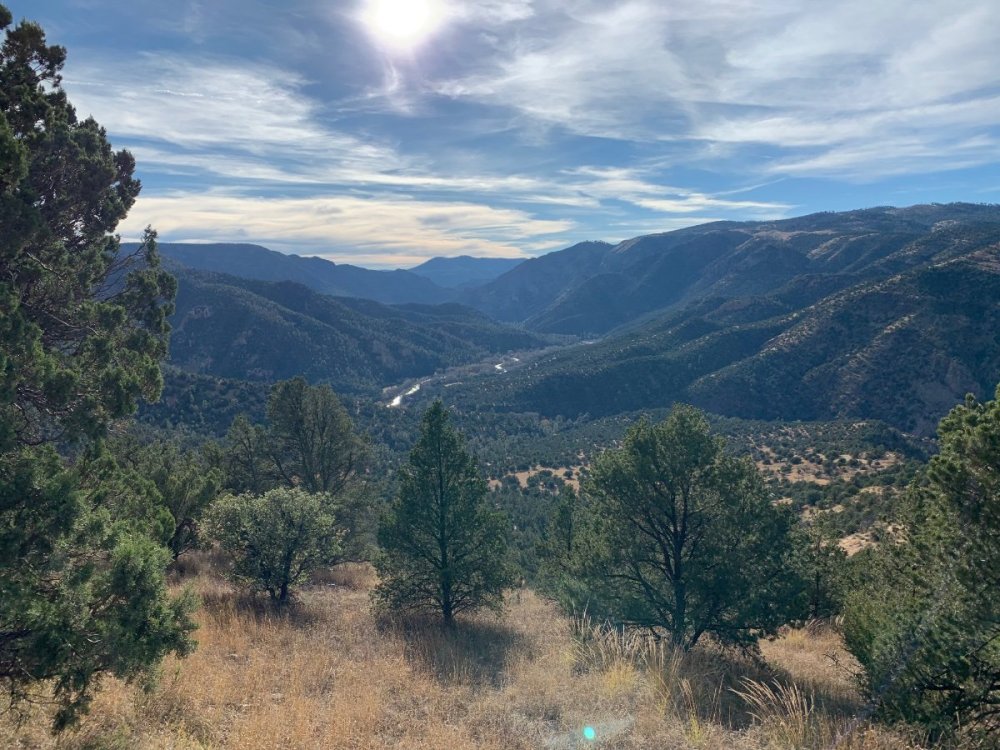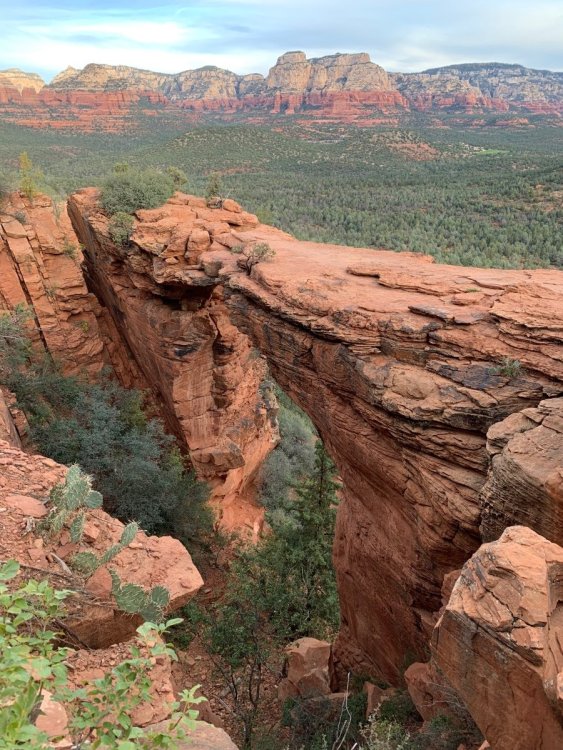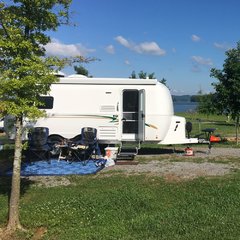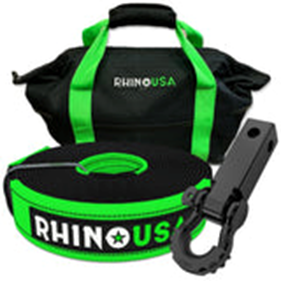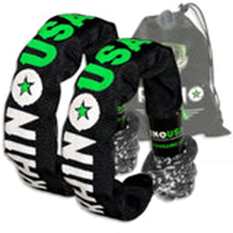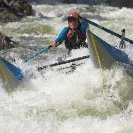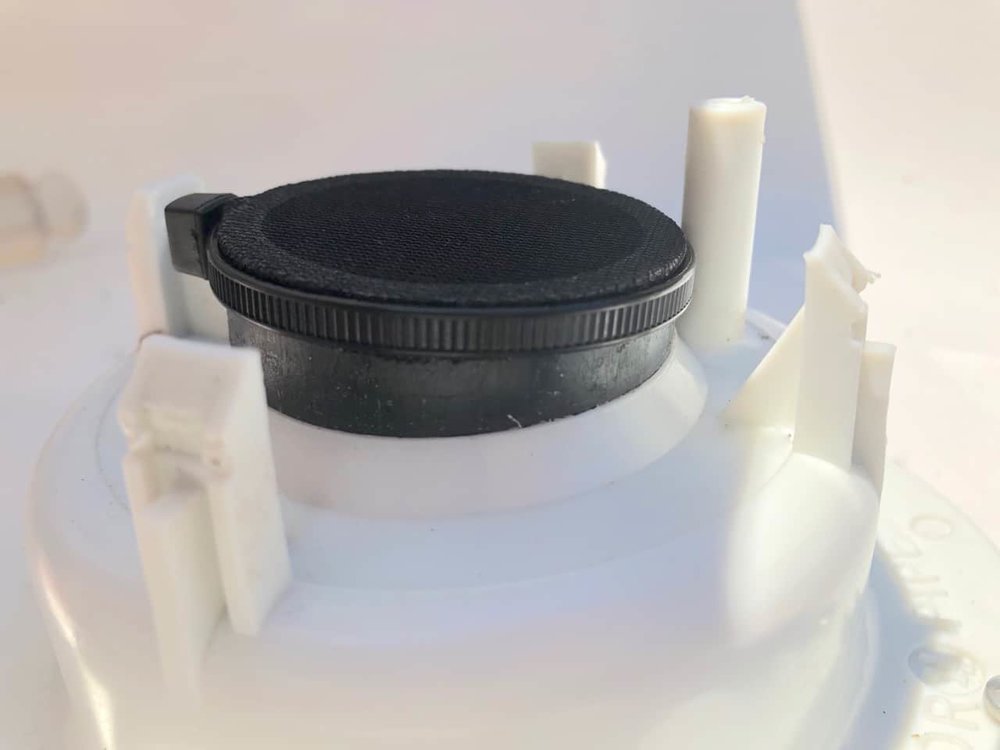Leaderboard
Popular Content
Showing content with the highest reputation on 11/17/2022 in all areas
-
Just completed a 2600-mile adventure from San Antonio to Sedona, AZ to the Gila Wilderness, NM. Stayed 6 nights at Rancho Sedona RV Park in Sedona. Pricey, but convenient! Loved the hiking but crazy busy especially on the weekend. The highlight was actually the Gila Wilderness where we enjoyed a quiet, dark, and unplugged stay. Stayed at Gila Hot Springs 4 nights. Saw multiple Ollies in the wild on I-10. On 25 Oct, we saw two Ollies in West Texas while traveling westbound. One was headed east and the other we caught up with heading west. We then saw the same(?) Ollie (TN plates) heading west in AZ on the 26th after staying the night in Demming, NM. Above: West Fork of Oak Creek Trail, Sedona, AZ Above: Devil's Bridge, Sedona, AZ Above: Gila Hot Springs, NM Above: Cooking breakfast in Gila Hot Springs, NM Above: The Gila River making its way to the Gulf of California. Not a human structure in sight!6 points
-
Agreed Steve, Yes, no issues at all with draining the fresh water tank in this manner. 👍🏻👍🏻 Even if the popo 👮🏻♂️ were to question the water dripping from your Ollie, it’s easily explained. In most states cops have bigger fish to fry. 😊4 points
-
Not always the case if only charging the batteries. I have the 4 x 12v lead acid wet cell battery setup and I keep it charged quite easily at home connected to a standard 15 amp household outlet using an adapter on the 30 amp Oliver connection. It never draws above 7 amps when I’m just recharging the batteries.3 points
-
This is very incorrect. As long as you manage the AC loads correctly, you can certainly run off a 20 amp or 15 amp circuit. The 30 amp power is needed for running all the loads at once. When hooked up to a smaller supply, just turn off the hot water heater and fridge circuit breakers (run them on propane). Do not operate the microwave. Do not expect to run the air conditioner while charging lithium batteries. Do the latter early in the morning, until they are topped up, then turn off the charger and run the aircon in the afternoon…. I rarely hook up to shore power, and when I do it is hardly ever 30 amp. You can access the xantrex charge control settings and turn down the output current if needed, this has been discussed in several other threads. John Davies Spokane WA3 points
-
Easiest way is to open the fresh water tank drain on the way home during the last trip of the season. By the time you get settled at home, it will be empty.3 points
-
There are basic rules that apply in almost all mechanical air movement (think physics.) You need more return air available than air supplied (think sizing of vents/ducts.) The further the return from the unit, the more resistance in that returning air (think restriction similar to water/hydraulic piping.) Supplied air that cannot return requires the unit to seek that missing air from elsewhere (shutting the bathroom door stops the bathroom circulation and if the bathroom vent/window is open it then requires the unit to suck air from around cabin windows, doors, weeps, etc.) And then the one that everyone is complaining about... "short cycling" refers to air that returns to the unit from a supply vent located too close to the return air - perhaps the simple solution to that is using a 12v fan on low to stir/mix the cabin air - that works. Charlie2 points
-
I would advise against using closed cell foam to plug the vents underneath the trailer. The foam is semi-permanent and can't be removed from the bug screens on the inside of the vent at all if you needed to. If you ever get water in the basement, the holes are the only way for it to escape. I would suggest making a small ball of HVAC putty and place it in the vent opening, being careful not to push it in too far into the screen. The putty does not harden and can be flicked out with a screwdriver when you want to open the vents for ventilation. I personally like the vents open anytime the temperatures are not going below freezing.2 points
-
I wanted to update this post. Within a couple of days of initiating this post I made contact with the factory. The service team was very helpful in setting me up with a local repair shop. To make a long story short, everything was fixed by Labor Day at no cost to me. No leaks, looks good!2 points
-
2 points
-
I've been charging mine (hull #709, with Xantrex Freedom Pro 3000 inverter/charger/converter unit) by adjusting the inverter setting so that it won't draw more than 14 amps (I have a few light bulbs on the same circuit so want to leave headroom for them). I think it's a different setting than John circled above - as the units are in amps, but if you check the settings on your inverter you should be able to sort out which to adjust for this purpose. Before I did this, I tripped the circuit if I plugged in with SOC low enough that the charger was in "bulk charge" mode, but it's been fine with this setting. It's easy to switch the setting from the Xantrex phone app, e.g. in the rare event I'm plugged in to a 30 amp outlet at a campground as I was back in June.1 point
-
John, I have winterized and just have the refrigerator on auto with no gas on. The only two draws on the lithium batteries are the refrigerator and the battery heater. I am in Denver where it was 25 and sunny. The batteries are at 100% on the lithium pro package. Yesterday I was just hooked up to an extension cord and a 30>15 amp plug and the only thing it was charging was the battery. As I understand it you're spot on. The 30 amp service lets you have more things on, but you can plug into just a regular outlet and use the 30>15 amp plug. As soon as the snow stops and the roads are good, I will continue on to Oregon.1 point
-
Great list, picked up Oliver in July, went on a two week trip to Teddy Roosevelt NP, N.D. Yellowstone, Grand Tetons, then Mt Rushmore, been camping for about 40 yrs. Visited about 36 N. P. Bucket list..Banff. And Alaska Eastern Canada, Manny1 point
-
That would seem reasonable. If there is only one possible shore connection and it's rated at 30 amps and that's what's required to operate the battery charger, we are pretty much constrained by the onboard system. This may have always been the case, after all the LE2 has always had a 30A shore requirement so you wouldn't want to connect that to a source that isn't rated for 30 amps regardless of the type of battery system.1 point
-
We just picked up our E2 in May and after some great travels, it is now time to get it winterized for a few months. I watched the Oliver University video on the whole process and even typed up the steps to have it for the future. The gray and black tanks are all cleaned and drained. The winterization process went as expected and I believe it to be fully winterized. My question is this: How do you truly drain the fresh water tank? The most I knew to do was run the pump until it was spitting part air and water. Is that enough?1 point
-
It’s actually Grand Teton National Park, named after the tallest mountain in the range, Grand Teton. There is only one Grand Teton. The range of mountains there are called the Tetons. It’s one of our top 3 favorite national parks. The town of Jackson, close by in the valley of Jackson Hole, is also a fun visit. Gros Ventre campground, in the park, is a good place to camp. We haven’t done the NPs in Northern California or anything in Washington or Oregon, they are on the list as is Alaska. Mike1 point
-
1 point
-
A long-shot but the stats above suggest to me that you may be experiencing a furnace air circulation problem in addition to any thermostat issues. I am guessing that you have the standard bed option and that you are testing your furnace with the bed made up. If this is not the case, please disregard this post as it isn't relevant to you. However, for others with the standard bed option, understanding my experience may be helpful. Your furnace is running about 66% of the time and is off only about 34% of the time. This seems like a lot of furnace on-time when it is 26 degrees outside. Off 4.04 On 9.36 Off 2.59 On 8.53 Off 5.41 On 7.42 Off 5.34 On 9.33 Off 3.49 On 7.55 Off 3.17 On 9 Off 2.23 26.27 51.19 34% 66% I experienced a similar problem with my LE II with the standard bed made up, although the outside temperature was up in the 40s. The problem was the furnace was running hard and short cycling, having trouble raising the temperature at the thermostat to merely 60 degrees. After getting out of bed, I realized that the temperature in the space under the bed was at least 85 degrees. I diagnosed the problem was the location of the single return air vent in my LE II that is located in the rear curbside corner of the trailer way back under the bed. It turns out, all of the hot air coming out of the two supply vents was being immediately sucked under the bed through the singe air return vent and back to the furnace and was not mixing with the remaining air in the cabin. Not only did this result in the rest of the trailer heating up very slowly, but the air from the furnace supply vents became very hot until the temperature over-limit switch in the furnace shut it down. Given the above stats, and assuming you have the standard floor plan and the bed is made up, it would be easy to test if you are experiencing this problem. Just rerun the test above, but remove a cushion on the front dinette and open the hatch wide. (also make sure your supply vents are angled forward so the warm air is not directed under the bed). This test condition will result in most of the return air to the furnace traveling through the open hatch and not under the bed, allowing the warm air from the furnace to mix with the cabin air (and thermostat) before returning the the furnace. If you experience a more balanced operation of the furnace on-off times resulting from this test, you have found at least part of your problem. This could actually be causing the problem with your thermostat as well. The Dometic thermostat anticipates when it needs to come on to maintain a temperature at no less than 2 degrees from the set-point. It actually remembers how fast the trailer cooled off previously and adjusts furnace restart time accordingly. If you have the air circulation problem I describe above, then the temperature around the thermostat is going to fall fast when the furnace turns off, even if the area under the bed is still a balmy 80 degrees. The thermostat "learns" that it needs to run almost constantly to maintain temperature within two degrees of the set-point at the thermostat. The clicking you hear may actually be coming from the furnace and not the air conditioner (mine was). This can happen when the furnace shuts off originally due to overheating of the heat exchanger, and the furnace igniter tries to restart the furnace before the heat exchanger has cooled sufficiently that the safety cutoff switch opens to allow the furnace to actually ignite again. This will generate a continuous, noisy clicking noise.1 point
-
I sloped mine so the nose was up. I think it's on the curb side (that's where the valve is) so maybe a tilt to make the curb side lower might.help too. Correct me if I am wrong. John1 point
-
Standard operating procedure when winching is to place a heavy blanket or similar soft weight across the cable at its midpoint to absorb most of the energy if it should break. Synthetic winch rope is super expensive, but it doesn’t fray, kink and cut your hands, and it does NOT stretch, so it doesn’t store energy like a steel cable or an over stressed nylon snatch strap. I chose not to install a winch in this Land Cruiser, instead I carry shovel, chain saw, heavy truck chains and Maxx Trax recovery boards. And of course I have an air pump and I air down the tires if needed. If all those won’t do the job (assisted by Toyotas incredible CRAWL control), I am calling for professional assistance, by phone or by sat com. … Crawl Control on the 2020 Land Cruiser | Getting Unstuck From Sand | Self Recovery Long ago, I wouldn’t have hesitated to help a stuck motorist. Now I am inclined to just call for professional help - legal ramifications of a botched recovery are too horrible to contemplate. John Davies Spokane WA1 point
-
Be very aware that many motorists around you will not understand what is going on, they will only see “something” pouring out and leaving a long splashy stream on the highway. They might think your trailer plumbing is broken 😳😳😳 I have done this in the past, drained the fresh tank, but only on deserted backroads. I personally don’t recommend doing it. Don’t be this guy: …. 18 years since the Dave Matthews tour bus dumped 800 pounds of feces on people taking a cruise John Davies Spokane WA1 point
-
1 point
-
One way or the other - this is not a big deal in that there is nothing the fresh water tank that will be hurt even if it freezes. And, you will sanitize it in the Spring anyway. However, I like mine to be as empty as I can get it and by just emptying it via the water pump there will be (perhaps - depending on the slope of the Ollie at the time) a bit of water left in the tank. Therefore, I open the fresh water drain valve and even slope the Ollie towards the drain point. Bill1 point
-
Share and Enjoy !Shares View the 2022 All Owner's Manual by clicking the button below. View Share and Enjoy !Shares The post 2022 Owner's Manual appeared first on Oliver Travel Trailers. Read the Full Article1 point
-
This note addresses the ropes or straps used by many “Non-Winch” vehicle recovery systems. Basically, there are two types of vehicle recovery ropes/strap designs: One uses the power of the retrieval vehicle to pull the stuck vehicle. This is a slow steady process some call “Static Pull” or “Low Energy” recovery design. The other has the recovery vehicle moving and stretching the tow rope/strap to multiply the pull-out forces considerably. These are called kinetic energy recovery (K.E.) ropes or straps. The tow related fatality video that I sent out previously (https://www.youtube.com/watch?v=Mb3BkeeXlIo) discussed not using our receiver hitch ball as a vehicle recovery attachment point. But in reality, ANY failure in the recovery system would likely result in flying missile(s) of various destructive energy heading either forward or backward depending where the break occurs in a K.E. based connection. The below video tests a Kinetic Energy strap that has redesigned by the OEM with a “safety strap” in an effort to control the uncontrolled energy during failure. It certainly highlights how safety clearance well away from the recovery operation is warranted. It is worth a watch to see the failure mechanics: https://www.youtube.com/watch?v=7STkTpTjDCU If you are a professionally trained in vehicle recovery, and practice the craft on a regular basis, with all the correct equipment and safety gear…. then you would want to have the proper equipment as indicated in the above two videos. This would include both static pull and K.E. gear. I was strongly biased to purchasing a K.E. style system due to their effectiveness. However, after watching the above two video’s, I changed my mind for many reasons. After many hours of research and soul searching, now I am following Frank C.’s lead in preparing for “minor emergency towing situations”. To that which he posted, I added two soft Shackles to facilitate connection at the stuck vehicle end without creating a heavy missile. I also went with a 30’ tow strap to allow for more options. To be clear, this is a static/low energy set-up and will only be used as such. The Rhino gear I chose is on-sale (Pre Thanksgiving 2022) at the Rhino web site. The sale cost plus free shipping and a Muddy10 (10%) discount is less costly than Amazon Prime at this time. I am interested in your comments and thoughts. Mahalo, GJ Rhino Kit: 30' Tow Strap, Hitch Receiver, Shackle Kit: 7/16" Synthetic Soft Shackles (2 Pack)1 point
-
Just a couple of clarification questions: Wouldn't you think that by diminishing the size (or eliminating) the existing return vent by the furnace and placing return vents further forward that feed into the basement, that when the furnace runs, it would pull warm air through the basement ? In my case, I placed a vent by the toilet, feeding into the basement below the forward dinette. There are exterior shower water lines run through the garage which is the most susceptible area with water to cold temps. To address those lines, was planning on adding a vent to the wall (separating basement from garage) in basement under the streetside bed and another in wall between garage and basement by the furnace under the curbside bed. I've already rerouted a heat duct through that area feeding into the main cabin below the battery box. This has considerably warmed up the area around the exterior shower. By partially of fully covering the only existing vent (right by the furnace) wouldn't the furnace operating then pull warm air through basement from the bathroom and through the garage from the now warm area under the streetside bed?1 point
-
1 point
-
Truma will not allow an Easy Start to be installed in an Aventa air conditioner. So, you must have at least a 3KW Inverter/generator to run it. One trade off for a quieter unit.1 point
-
Share and Enjoy !Shares View the 2023 Legacy Elite & Legacy Elite II Truma Aventa Eco Air Conditioner Manual by clicking the button below. View Share and Enjoy !Shares The post 2023 Truma Aventa Eco Air Conditioner Manual appeared first on Oliver Travel Trailers. Read the Full Article1 point
-
I had a fellow Oliver owner give me plugs that he cut from a piece of fiberglass he had. They fit perfectly into the ventilation holes from the inside. Then, I cut a section from a yoga mat and used contact cement to stick it to the inside of the battery compartment door. You could use any moisture resistant material to cut plugs out of. Mike1 point
-
For our 2018 version I have found: It takes a full 24 hours to precool. Also it does so faster on propane. We travel using propane 98% of the time. Not if using tunnels in some areas. Works best on propane Once cooled down, it works fine even in 105 degree F IF I park our trailer with the curb side facing Northish. This pretty much keeps the sun off the refrigerator area. If I can't get it sort of facing that direction, some awning shade is advantageous. Direct sun on the refrigerator area with temperatures over 100 is problematic. GJ1 point
-
John, you’ve seen our storage, covered and deep enough I can park all the way in the back and avoid any sun except at the very end of the day on the front of the trailer. I’ve not used tire covers because the tires never see sun while in storage. If your space gets sun on one side and the tires get that sun then I would get tire covers. When I had AGMs I plugged in to a 20a. With lithiums, I just turn them off. If your solar doesn’t get sun, either in a covered space or enclosed I would turn off or disconnect your batteries. If your panels get some sun then I’d let the solar do your battery maintenance. We’ve talked about getting an enclosed slot here in Boerne, but the extra cost doesn’t seem worth it since security is good. Could you get a spot that is more covered than your end spot? Mike1 point
-
I experienced the same yellowing of my window caulking after my first extended trip shortly after picking up my Oliver. It looked the same as it does in your picture. Turns out that it was just discolored from driving a number of miles on a gravel road with clouds of very fine dust. When the trailer comes out of the factory there is a very slight residual stickiness to the surface of the caulk that attracts fine dust like a magnet and holds on to it. A light wash and hard rinse didn't remove the dust/discoloration and it was still yellow looking. However, a fair amount of extra pressure with a soapy wash mitt on the caulk when washing the trailer a second time (and some use of a soft toothbrush for tight spots) made the caulk white again and eliminated the slight stickiness. It worked for me and I haven't experienced discolored caulk again.1 point
-
We have started listening to Empire of The Summer Moon: Quannah Parker and The Comanche Indians, The Most Powerful Tribe In America. Being from Oklahoma and having lived in Texas for many years it’s a fascinating account of the Indian tribes and their history. Our last long drive was over eight hours and we weren’t ready to stop! if you are driving through Oklahoma, Texas, Kansas or New Mexico it’s a great book.1 point
-
I decided better safe than sorry on the bug thing. I had the ladder out yesterday to install the easy start on my AC, so why not add a screen to the plumbing vent while I was up there. Taking off the vent cap is just one screw and it pops off. Once uncovered, the PVC vent sticks up a half inch or so from the roof, making it a simple task to add some screen. I had a pack of these in the trailer for repairs, and they fit perfectly with just enough overlap to zip tie one on the vent. (Those particular patches come with tape around the edge, but it didn't want to stick so I took the tape off and used a zip.) Took all of five minutes, if that. Just be sure that if you go through the trouble of adding a screen that you use a finer mesh like a tent screen. I think standard screen that you'd get at the hardware store is probably not fine enough to keep out the sort of gnats that would infest your toilet.1 point
-
My LE II hull number 351 was delivered this past June. Mine also came with a 1 Amp fuse installed for the composting toilet. Luckily it hasn’t blown yet. None of the local stores have them in stock. As John shared someplace, they’ll need to be ordered. Of more concern was the electrical power connector for the Natures Head ventilation fan was forced together backwards. Though the connector is keyed to maintain polarity, someone with enough determination forced it together backward. Result? The fan ran backwards. Luckily I checked to make sure it was working correctly before puttting the toilet into service and was able to make a serviceable repair in the field myself. Insects have been a problem with mine too. I now realize they probably came in through the vent. In addition to the infected compost bin, the clear vent hose had dozens/hundreds of dead insect bodies laying in the bottom. I was able to disconnect everything and shake them out during the disinfection process. I’m adding a filter to the EXHAUST side. I mistakenly originally added one to the intake side. While disinfecting the bug infestation I saw that the intake side comes with a very thin foam filter installed. My mistake. I knew that I read someplace that an air filter was missing. Now I know that it’s missing on the exhaust side. Even with the initial teething issues, I’m willing to put up with it to avoid the dump station and the ability to stretch out the available on board water supply.1 point
-
This is the latest information that was sent to Oliver Service, When the heat turns on and off the temperature on the thermostat LCD displays remained the same. According to the manual there should be a 2 degree set back before the heat turns back on. This does not seem to be the case the heat cycles on and off at the same temperature according to the LCD display on the thermostat. After the heat shuts off, the temperature has not dropped the 2 degrees yet the furnace starts back up. Also when the heat is off, approximately 1 -2 minutes before the heat kicks back on the air conditioner starts to click. It will click 3 to 5 times within this period before the furnace starts. Here are some stats: Outside temp 26 degrees set thermostat to 60 degrees. Heat came on and shut off when the temperature on the LCD display read 59 degrees. I have 2 other thermometers in the trailer one read 52 degrees and the other 53 degrees an 7 to 6 degree difference. The heat shut off and the LCD display still read 59 degrees. The heat remained off for 4 minutes and 40 seconds then restarted. This continued until I decided to call it a night. Off: 4:40 min/sec On: 9:36 " Off: 2:59 " On: 8:53 " Off: 5:41 " On: 7:42 " Off: 5:34 " On: 9:33 " Off: 3:49 " On: 7:55 " Off: 3:17 " On: 9:00 " Off: 2:23 "0 points
-
Recent Achievements




